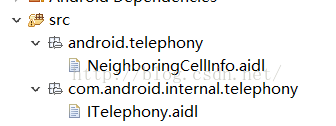編輯:關於Android編程
 Android中使用PagerSlidingTabStrip實現導航標題的示例
Android中使用PagerSlidingTabStrip實現導航標題的示例
此開源框架官網地址:https://github.com/astuetz/PagerSlidingTabStrip可以理解為配合ViewPager使用的交互式頁面指示器控
 Android之JSON全面解析與使用
Android之JSON全面解析與使用
什麼是JSONJSON 指的是 JavaScript 對象表示法(JavaScript Object Notation) JSON 是輕量級的文本數據交換格式 JSON
 Android 基於google Zxing實現二維碼、條形碼掃描,仿微信二維碼掃描效果(推薦)
Android 基於google Zxing實現二維碼、條形碼掃描,仿微信二維碼掃描效果(推薦)
了解二維碼這個東西還是從微信中,當時微信推出二維碼掃描功能,自己感覺挺新穎的,從一張圖片中掃一下竟然能直接加好友,不可思議啊,那時候還不了解二維碼,呵呵,然後
 Android初級教程反射+AIDL+內容觀察者監控黑名單號碼代碼模板
Android初級教程反射+AIDL+內容觀察者監控黑名單號碼代碼模板
對於想要攔截一些莫名的陌生號碼,就需要電話攔截功能與刪除其電話記錄功能。攔截的主要業務邏輯,分別是在一個服務裡面進行:1、注冊電話監聽;2、取消注冊電話監聽(當然注冊於取